Marketers Vastly Understate The Sales Effect Of Creative And Significantly Overestimate The Impact Of Targeting
Click here to view a 15-minute video of the key findings.
Click here to view or download the slides.
Over the last five years, the Cumulus Media | Westwood One Audio Active Group® has commissioned Advertiser Perceptions annually to survey brands and media agencies on the sales contribution of five advertising effectiveness factors:
- Brand
- Creative
- Reach
- Recency
- Targeting
How would you answer? What percent of sales are driven by each element? Answers should add up to 100%.
NCSolutions provides the following definitions of what they call the “Five Keys of Advertising Effectiveness”:
- “CREATIVE quality measures the influence of advertising by looking at the number of purchases it drives. What this means is two factors motivate consumer purchase decisions: the creative message and the context in which it’s delivered. Strong creative delivers higher incremental sales than weak creative does.
- BRAND refers to factors that are not changed overnight. They’re what makes a brand a brand: market share, brand penetration and the tendency to retain loyal buyers relative to the competition.
- TARGETING is the measure of how well a campaign was able to reach a particular audience.
- REACH speaks to scale. It’s how many households were exposed to advertising through the duration of the campaign.
- RECENCY is all about the timing of advertising in relation to when a consumer makes a purchase. High rates of recency mean that more impressions are being served just before store trips.”
Advertising effectiveness science reveals sales contribution
To determine what actually drives advertising effectiveness, we turn to one of largest and most prominent studies ever conducted on sales effect. The Five Keys to Advertising Effectiveness, released in August 2023 by NCSolutions and Nielsen, is based on nearly 450 sales effect studies and over a decade of experience linking advertising to sales results.
The two sales drivers with the most dramatic disconnect between marketer perception and reality are creative and targeting.
Creative: Marketers and media agencies massively underestimate the immense sales effect power of creative
Creative, according to NCSolutions, drives half of sales. This is 2.5 times what advertisers perceive.
The Advertiser Perceptions February 2024 study reports brands and media agencies say creative only represents 19% of total sales effect. NCSolutions science reveals creative generates an eye-popping 49% of incremental sales.
Marc Binkley, principle with Quatical, the evidence-based marketing consultancy, says, “Creative is the closest thing we have to a silver bullet…it’s a way to supercharge budgets. Emotional, well-branded creative is a way to be more memorable. The goal isn’t just awareness, it’s being memorable in as many buying situations as possible.”
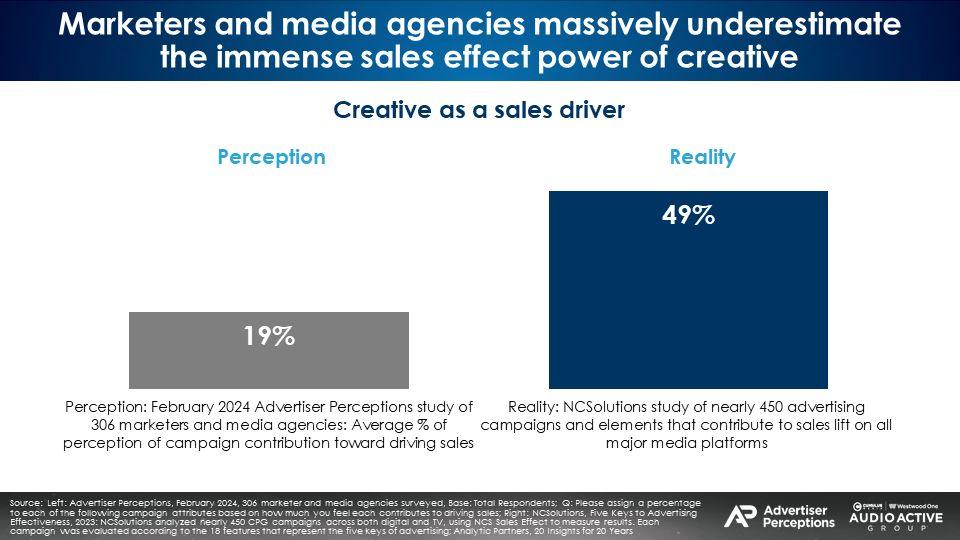
Over the past five years, across 606 marketers surveyed, perceptions of creative as a sales driver has remained consistent, hovering at about 20%.
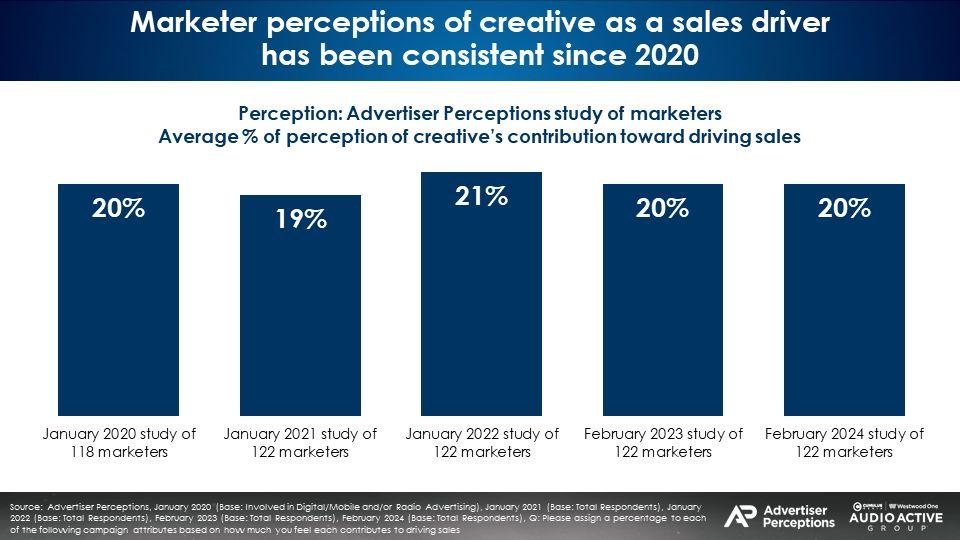
Analytic Partners, the leader in media mix modeling says, “Creative is a key driver of advertising performance/ campaign effectiveness, second only to investment levels.”
Lou Paskalis, CEO and Founder of AJL Advisory, bemoans the lack of attention creative gets, saying, “As a life-long media guy, I have experienced moments of outrage that the creative was essentially given a hall pass and my media plan was given a proctology exam when the campaign failed to achieve the desired outcome. I think the biggest exogenous variable in the equation today is the emotional attracting of the creative to the intended target (which often is not the ‘best’ target when you look at campaign analytics but we’ll leave that rabbit-hole for another day).”
System1, a leader in creative testing, has quantified the relationship between creative quality and market share.
Each ad tested is assigned one to five stars based the degree of positive emotional response. A three-star ad can generate 1% increase in long term market share. A five-star ad can lift market share by 3%.
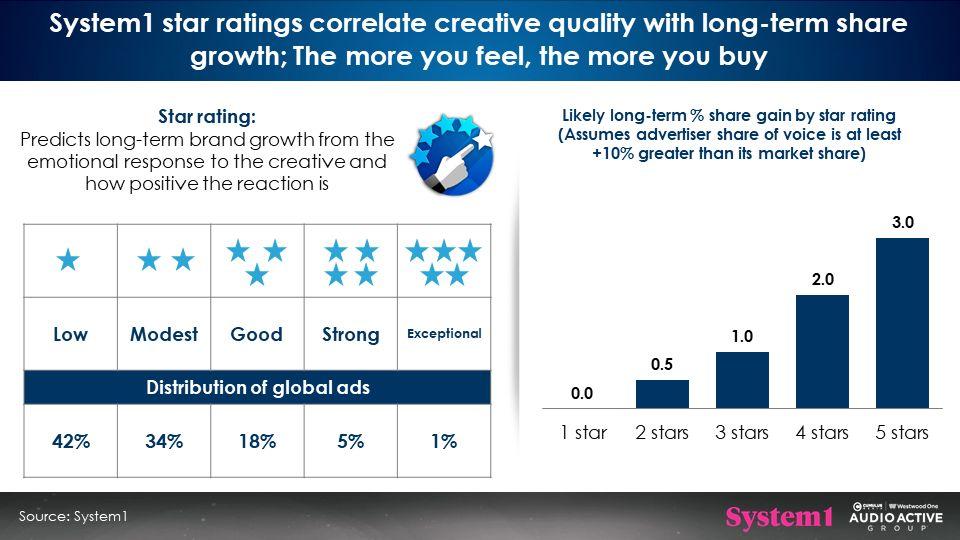
According to System1 Chief Customer Officer Jon Evans, “Creative is the number one factor in explaining the performance of your advertising and yet most marketers still don’t realize it. That means that those who focus on getting the creative right have a huge competitive advantage. Firstly, marketers need to wake up to the importance of creative and secondly realize it isn’t some dark art but something you can measure and improve to give you an advantage over the competition who haven’t realized this yet.”
Evans continues, “If the number 1 factor influencing the performance of your campaign is the creative, are you making this the number 1 focus of your business? Why spend all the money reaching the right people at the right time with the right message only to let them down with boring creative? Why measure reach, frequency, and targeting if you don’t measure the most important factor, the creative impact itself? Turns out marketers are a pretty poor judge of what makes a campaign work so do yourself a favor and read this research and pay a lot more attention to what you are saying than who, where, and when you are saying it.”
Andrew Tindall, System1’s SVP Global Creative & Media Partnerships, agrees, “This data doesn’t surprise me, marketers spend far too much time worrying about anything but the one singlehanded thing that could change their business that quarter – creative effectiveness. We need to be bold, unapologetically say no to things to get time to make better ads, and partner with the right agencies that bring the talent, tools and knowledge to make work that works.”
Targeting: Marketers and media agencies vastly overestimate the impact of targeting
Marketers and media agencies consider targeting the number one sales driver at a 24% contribution. What does the marketing science say?
Per NCSolutions, targeting ranks a distant fourth, generating only 11% of sales effect. The sales contribution perception of targeting is twice the reality.
As to why marketers and media agencies are underestimating creative and overestimating targeting, Dave Morgan, Executive Chairman and founder of Simulmedia, posits, “I suspect that a critical factor is marketers’ belief that creativity is very hard to control (like catching him lightning in a bottle), whereas audience targeting is perceived as quite controllable. If marketers concede that creativity is the most important factor then they concede that they can’t control their company’s and own destiny very well.”
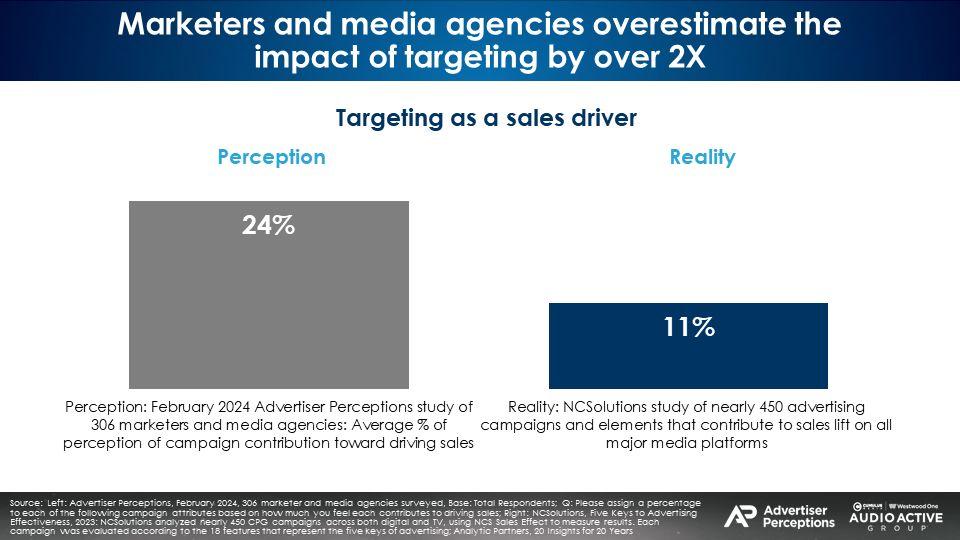
Marketer perceptions of targeting have been in the mid to high 20s since 2020. Compared to January 2020 (27%), marketers believe targeting’s effect on sales has dropped to 23% in 2024. Perhaps due to the looming cookie depreciation?
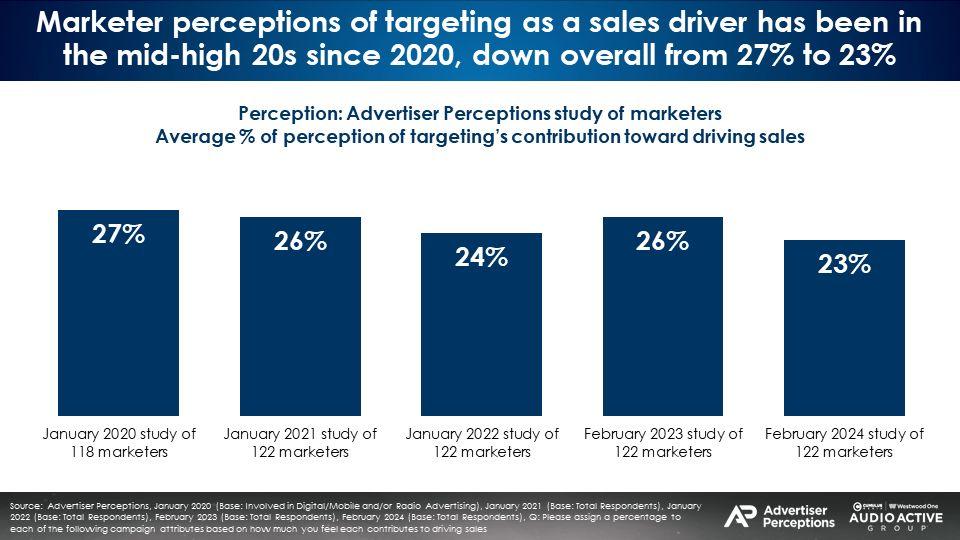
The best-selling marketing and media strategy book How Not To Plan: 66 Ways to Screw It Up by Les Binet and Sarah Carter cautions, “Don’t target too narrowly. It may be efficient, but it’s rarely effective. Tight targeting means low sales and profits.”
Writing in MediaPost, Elyse Kane, Professor at Baruch College and former Vice President, Insights and Analytics at Colgate Palmolive, notes there are three “watch-outs” with targeting:
- “Many companies mis-define their targets
- Many companies define their targets too narrowly
- People aren’t static, they move in and out of targets”
Beware narrow targeting: The P&G memo that was ripped up and thrown away
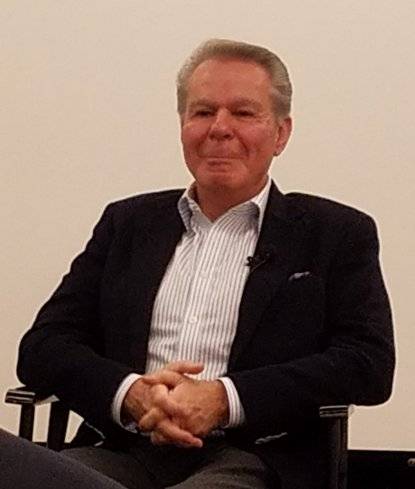
Irwin Gotlieb, former Global CEO and Chairman of GroupM
Photo taken by Pierre Bouvard
At an Advertising Research Foundation event, the legendary Irwin Gotlieb, former Global CEO and Chairman of GroupM, the world’s largest media agency, recounted an error he made as a young agency media executive recommending that P&G’s Pampers target narrowly rather than broadly:
“I’m the guy who wrote a memo to my P&G client when I was 27 years old saying that Pampers targeting was way too broad, that they should be focusing all their money on child-bearing-age females and skip everything else. … [Referring to the memo, the client] says, “This one, I’m just tearing up and throwing away. For your benefit, I’m never going to tell anyone you sent it.”
And I said “Why? I thought it was brilliant.” He said, “Look, it’s just a diaper. But you’re putting it on your infant and if you haven’t known about the brand since you were a child, you are not putting it on your infant. And if your mother doesn’t support your decision, you’re not putting it on your infant. And so, think more broadly and don’t be that stupid.”
“… Foundation principles in marketing continue to be relevant. They’re probably more relevant today than they ever have been. Yes, you have to do top of the funnel marketing. If you don’t have awareness, you can’t create consideration and you can’t create preference and you can’t create a transaction.”
Sales drivers: Perception versus reality
Here are the rankings of sales drivers from the Advertiser Perceptions study (to the left) and the ranking of actual sales drivers (to the right) from NCSolutions’ Five Keys of Advertising Effectiveness study.
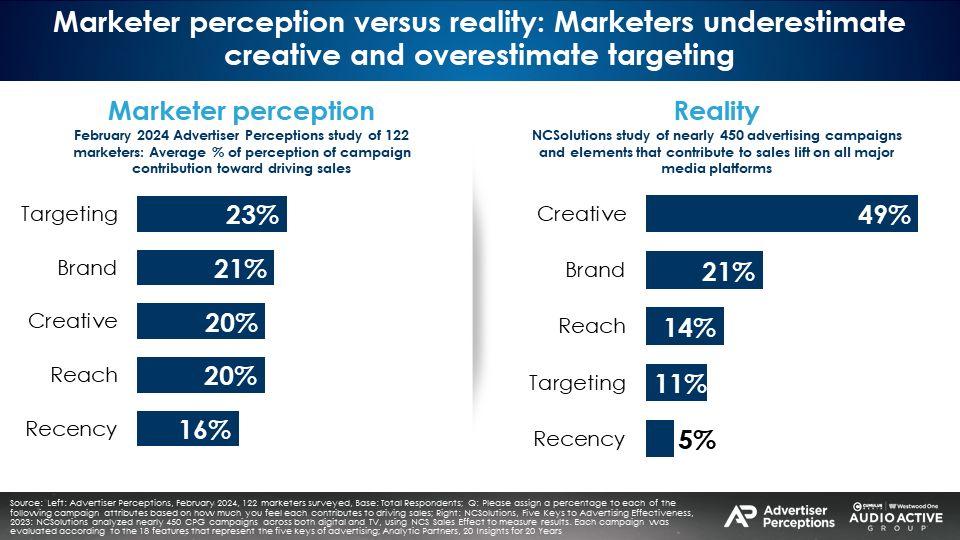
Focusing on the 122 marketers surveyed in February 2024 by Advertiser Perceptions, marketers underestimate creative (20% versus the 49% reality) as a sales driver.
Brands overestimate the sales effect of targeting, reach, and recency. Brand is the only sales driver correctly perceived at 21%.
Marketers versus media agencies: Both groups are aligned on their perception of sales drivers
For the most part, marketers and media agencies have similar perceptions on the sales effect contribution. Both groups believe targeting to be the most important followed by brand.
From there, the 122 marketers surveyed in February 2024 believe creative and reach are tied (20% each). The 184 media agencies surveyed perceive reach (21%) to be slightly more important than creative (18%).
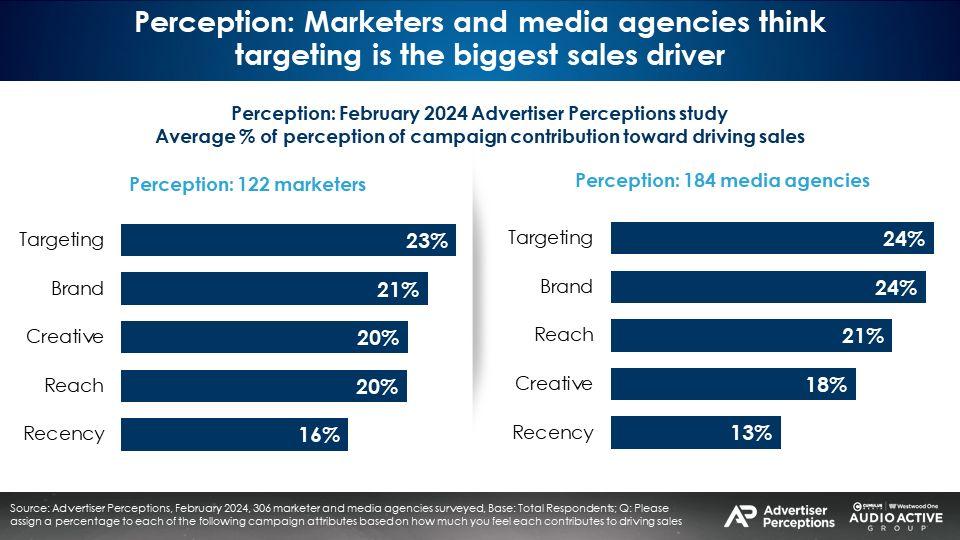
Marketer/media agency perception versus NCSolutions reality
Here are the rankings of sales drivers from the Advertiser Perceptions study of marketers/media agencies combined (to the left) and the ranking of actual sales drivers (to the right) from NCSolutions’ Five Keys of Advertising Effectiveness study.
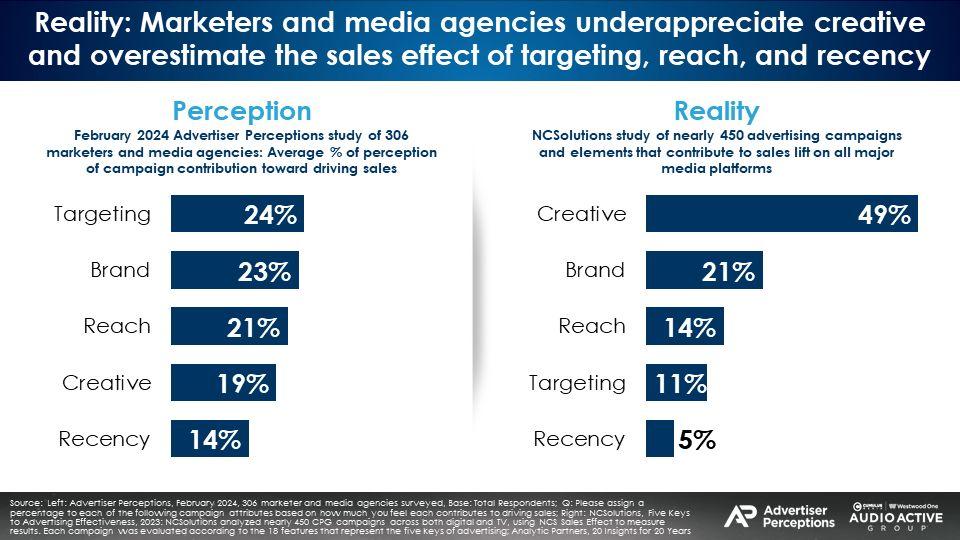
Key takeaways:
- Creative: Marketers and media agencies massively understate the immense sales effect power of creative.
- System1 Chief Customer Officer Jon Evans says, “Creative is the number one factor in explaining the performance of your advertising and yet most marketers still don’t realize it. That means that those who focus on getting the creative right have a huge competitive advantage.”
- Andrew Tindall, System1’s SVP Global Creative & Media Partnerships, asserts, “We need to be bold, unapologetically say no to things to get time to make better ads, and partner with the right agencies that bring the talent, tools and knowledge to make work that works.”
- Targeting: Marketers and media agencies overestimate the impact of targeting by 2X.
- Les Binet and Sarah Carter caution, “Don’t target too narrowly. It may be efficient, but it’s rarely effective. Tight targeting means low sales and profits.”
Recommendations:
- Creative quality should be the top priority. To learn about creative quality strategies, click here for the Cumulus Media | Westwood One Audio Active Group®’s audio creative best practices.
- If possible, pre-test creative.
- Fixing audio creative is inexpensive. There is no need to fly the crew back to Cancun to reshoot.
- Don’t overstate the value of targeting – it is a small lever.
Click here to view a 15-minute video of the key findings.
Pierre Bouvard is Chief Insights Officer of the Cumulus Media | Westwood One Audio Active Group®.